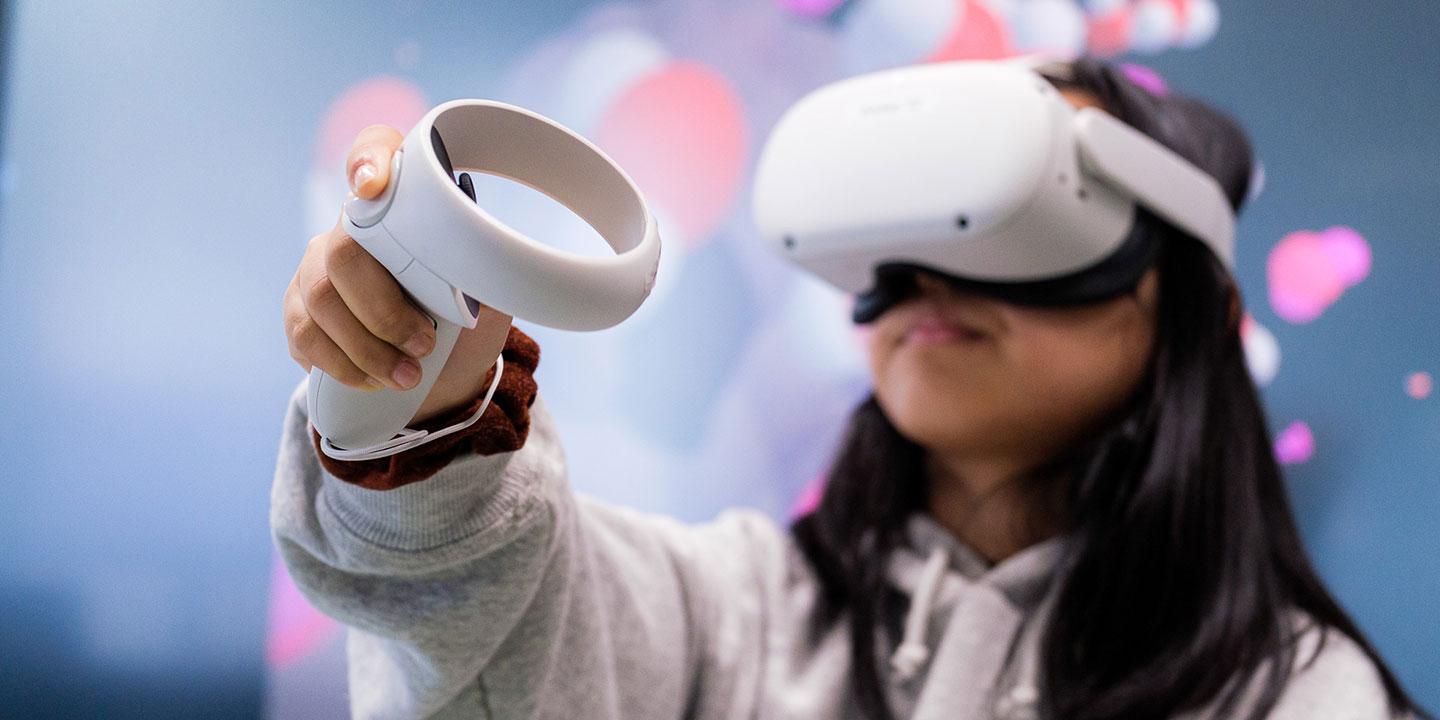The usefulness of virtual reality in science classes

In this project, an innovative virtual reality (VR) tool was developed to teach the water cycle in a clear and interactive way in primary schools. The results showed that immersive VR positively influenced learning outcomes.
Project description (completed research project)
This project developed a VR teaching tool to explain the water cycle in primary schools. It comprises 11 lessons with different levels of immersion, comparing the use of VR headsets with computers. The intervention aimed to improve children's understanding of the water cycle.
Background
Many topics covered in science classes concern aspects of the world that cannot be directly observed, such as structures and processes in the microcosm (e.g. molecules, atoms) or the macrocosm (e.g. the solar system). However, actively experiencing and manipulating a dynamic environment is a crucial source of learning, especially for children. There is therefore a need for innovative teaching methods that facilitate access to processes and structures that cannot be directly observed. In this context, VR offers interesting potential for science teaching, as it allows immersion in virtual model worlds.
Aim
The project aimed to investigate the effectiveness of immersive VR in improving primary school students’ understanding of the water cycle.
Relevance
The findings suggest that immersive VR is a promising tool for teaching complex scientific concepts in primary schools. However, practical challenges remain, as resistance from educational stakeholders may hinder the integration of VR in primary schools.
Results
Three main messages
- Immersive VR effectively makes worlds that are not directly perceivable accessible and improves learning outcomes related to the water cycle in 11- to 12-year-olds, both immediately after the intervention and eight weeks later.
- VR can be highly entertaining for children, demonstrating its potential to engage children more effectively in educational settings.
- Despite the potential benefits of VR in primary education, there is relative resistance among directors, teachers, and parents regarding its acceptance and intention to use it, primarily due to concerns about practicality and costs.
Original title
Using virtual reality to learn about inaccessible micro- and macrocosmic structures in primary school
